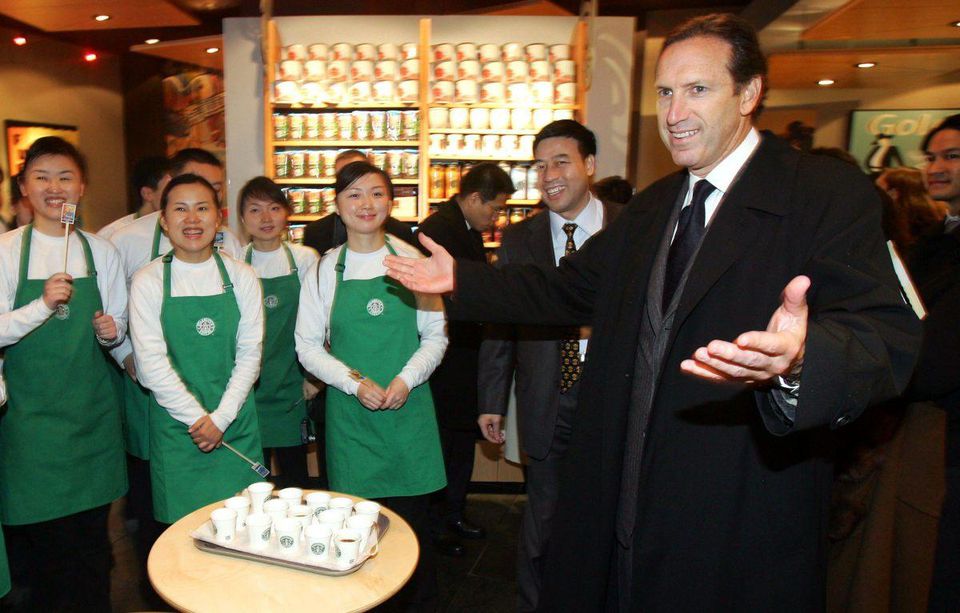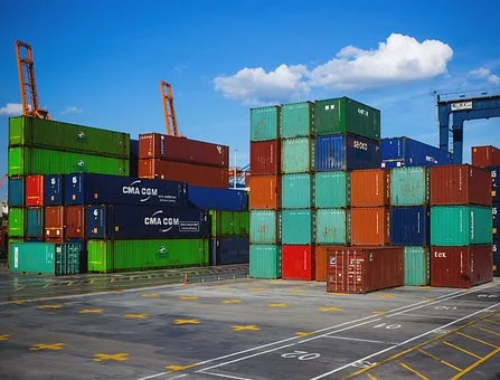Skeptics Still Haven't Proven Starbucks Wrong About China
A photo of a Starbucks store opening in Shanghai in nearly two decades ago shows a youthful then Starbucks CEO Howard Schultz with Chinese staff and looking ready to please. Another photo of him in Shanghai last week has the same smiling expression at a meeting of 2,000 employees.

A photo of a Starbucks store opening in Shanghai in nearly two decades ago shows a youthful then Starbucks CEO Howard Schultz with Chinese staff and looking ready to please. Another photo of him in Shanghai last week has the same smiling expression at a meeting of 2,000 employees.
The affable style may be unchanged but the business has: Starbucks today has some 3,400 stores and almost 50,000 employees in China, making it one of the most successful U.S. consumer brands bar none. A market that has eluded many global brands is still on the rise in terms of importance to Starbucks, too: it expects to add a total of 600 new stores this year. “China without question will surpass the size and scale of the U.S. market over time, and be the largest market in the world for Starbucks,” Schultz said in Shanghai last week. Local rival Luckin Coffee reportedly sold shares this month that valued the company at $1 billion, yet it’s hard to see it as a potent rival when no one answers the phone number listed at its website, as happened when Forbes China called last week.
In a meeting with journalists in Shanghai on finance and China business, Schultz – in town on what was billed as something of a thank-you tour to staff following his departure as chairman – was repeatedly asked to defend same-store-sales performance figures weaker than analysts hoped. “What we’re concerned about is long-term opportunities,” he said.
In fact, great companies and brands aren’t built off of quarter-to-quarter fluctuations in sales. Starbucks has done a number of things right in China, and, though like every business faces plenty of risks in a fast-changing world, it also deserves credit where it’s due:
*It’s playing a long-term game. “When I think about Starbucks, the entire history of the company has been based on a long-term mentality,” Schultz said. “I think about the country of China and how they’ve taken a long-term approach. That’s very similar to what we’re trying to do here.” For now, that has meant building business scale rather than just focusing on same-store sales.
(Source: Forbes)
-

"2021 China Internet Home Improvement Consumption Trend White Paper" released
-

Sales of soft furniture such as sofas and beds in China doubled in August
-

China' s furniture retail sales in August was 13.7 billion yuan, a year-on-year increase of 6.7%
-

From January to August, China' s furniture exports reached 305.43 billion yuan, an increase of 31%

 沪公网安备31010402003309号
沪公网安备31010402003309号



